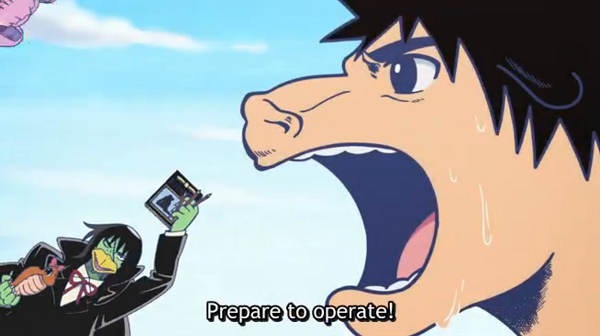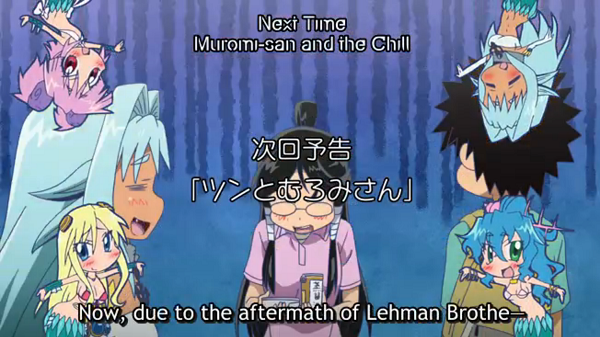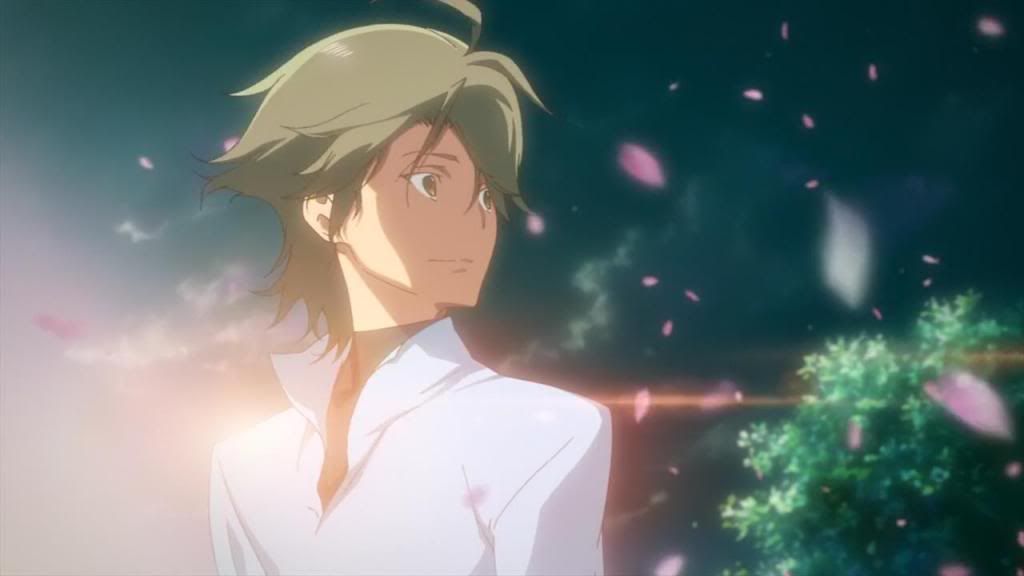KENJI NAKAMURA IS ANIME GOD TRIBUTE POST
Thoughtful post. I'd like to comment on a few aspects of it.
Nevertheless this will be a long-ass analysis of one of the most distinct animators working in Japan today.
Correct me if I'm wrong, but I don't think Nakamura is an animator himself, just a director of animated works.
The three (and only three!) series' that Nakamura has directed so far have displayed wildly different artistic styles, making a summary of his aesthetic preferences complicated.
Heh, while I understand people's wish to forget
C, I don't think you're doing Nakamura a favor by going out of your way to pretend it doesn't exist. The existence of a bad show he directed doesn't diminish his talent, it just means that no one's perfect. Even great creative minds can miss the mark.
There are a few common trends in these works; his designs are relatively flat and lack complex shadowing, such that although looking more anime Tsuritama wasn't all that much of a departure for him.
Besides everything you point out, I think the most salient feature of Nakamura's direction is angular editing - sudden jump cuts where the logical spatial/temporal progression between each is not always clear, creating a disorienting and unsettling feeling. I have to wonder if working at Toei influenced the development of this trait, as it's a way to use limited animation for artistic effect.
He seems interested in ugliness for the sake of naturalism, from the detailed mouths/teeth/eyes in Mononoke and Trapeze's character designs, Yuki's demon face in Tsuritama, and the recurrence of sweat.
Hmm, I don't know if naturalism is exactly the right word here. Nakamura's work is too heavily stylized and exaggerated. It's not observational enough to be naturalistic.
Each of Nakamura's three shows have wildly different palettes, but they never seem garish.
Trapeze is definitely garish, though it works within the context of the show.
All usually focus on one abnormal character (Medicine Seller, Irabu, Yuki).
People who don't fit into the norms of human society, who march to the beat of their own drum, is a continual fascination for Nakamura. This is not just the case with his flamboyantly eccentric characters (Haru is the most obvious example from
Tsuritama, see also his portrayal of Oba in episode 10 of
Kemonozume), but also in his fascination with the psychologically disordered mind, people who struggle between what society demands of them and the pull of their inner neuroses, such as Yuki and the patients in
Trapeze.
MONONOKE
It also achieves this horror without using darkness or obscurity. Everything is constantly in plain view.
I get what you're trying to say here - a contrast with more typical ways of building an atmosphere of horror - but I don't think it's accurate to say that
Mononoke doesn't use obscurity. The whole style of direction, which leaves the viewer unsure at times as to what is real and what is merely within the minds of the characters, can be quite obscure. The presence of the monsters is signified not by its visual appearance, but by its effect on the seals and other tools the Medicine Seller uses. Each story is a process of the Seller gradually unmasking the truth behind them; it's not clear from the beginning.
Mononoke succeeds by straddling this line and making it unclear how much of the terror is a product of its characters' own doing.
Mononoke makes it very clear by the end of each story that the sole cause of the terror is the moral transgressions of the humans involved.
TRAPEZE
When I first saw Trapeze, I was skeptical of the treatment of mental illness by the show; the wacky carnivalesque setting, the nods to Freud in Irabu's three forms, the femme fatale nurse, the fact simple revelations were enough to resolve serious psychological problems...it seemed rather demeaning.
As someone who has struggled with mental illness, I respect and appreciate
Trapeze's portrayal of it. Despite its quirky sense of humor, it shows sensitivity and human warmth towards each patient. It doesn't mock them for being messed up.
It becomes clear after a few episodes that this show isn't about psychology at all.
I don't think that's fair to say. It's not about severe mental illness - the kind that gets you placed in a mental hospital - or presenting a medical course of treatment for various disorders, yes. But it is about the human mind, the odd quirks and obsessions that grow to be debilitating and destabilizing, the disintegration of the self that can cause them, and how to accept the various parts of the self and reintegrate them into a healthy whole. That is psychology.
And though I've grown tired of the last few episodes are more serious cliché, this show pulls it off by delivering a general message about the importance of mental health.
That's not a cliche, that's a fundamental storytelling technique - the dramatic climax. The last episode, which does an amazing job of providing such a climax to an episodic show, is not about the "importance of mental health" per se, but about the importance of recognizing those who are struggling with mental issues and coming alongside them to support them instead of turning a blind eye.
TSURITAMA
I think this style coheres with the magical realist story well, even if the magical realism remains in the periphery for the most part.
The point of magical realism is that the magical side doesn't overwhelm things to be point it becomes an out-and-out fantasy.
It's a fairly standard show with awe-inspiring art. Overall I'd say this is a less bold endeavor than the other two, but a great demonstration of Nakamura's range and of high quality overall.
It is the least aggressively weird of Nakamura's shows (though still quirky in its own ways), but I wouldn't go so far as to call it "fairly standard". Its attention to careful, nuanced character development and growth, mixed with its science fiction elements, marks it as a rare breed among anime.
Some broader aesthetic comments:
They are subject to the same styles and trends, but have duration, sound, and narrative in addition. To me, these added elements are more for the purposes of commentary than to create some frankenstein Gesamtkunstwerk.
I'm not sure what you're trying to say here. The point of
Gesamtkunstwerk, as Wagner conceived it, is the exact opposite of "frankenstein" - it's to take elements that have previously been separated from each other (so music, poetry, acting) and make them work together towards a common dramatic purpose to create one unified whole. In an ideal film, time, sound, and narrative are not extra layers of incidental commentary added on top of the primary visual image, but elements that work in conjunction with the visual image to create the desired effect.
The fact that Nakamura's shows all have precedent elsewhere isn't important.
Pretty much everything has some kind of precedent somewhere, even if it's just the deliberate avoidance of convention. No artwork is created in a vacuum. Pure originality does not exist. It's the combining of existing elements in a fresh way that is the mark of a great artist.











